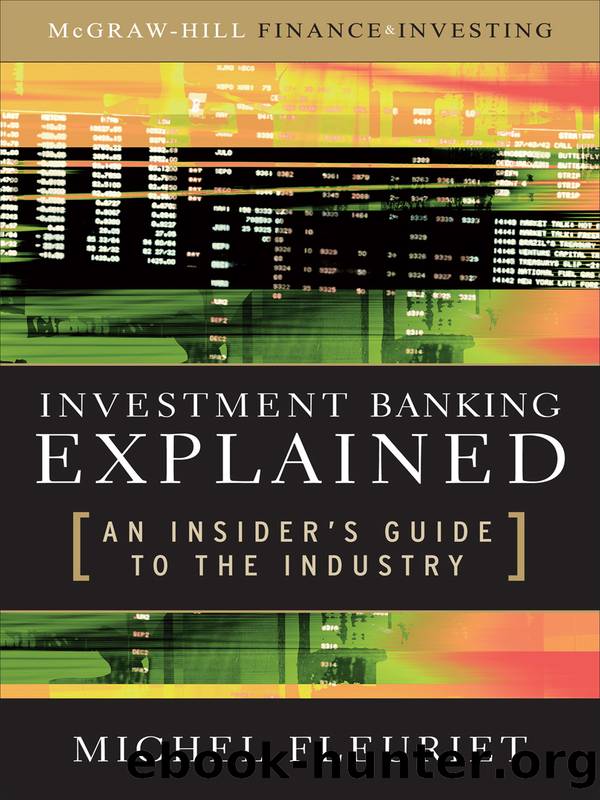Investment Banking Explained by Michel Fleuriet

Author:Michel Fleuriet
Language: eng
Format: epub
Publisher: McGraw-Hill Education
Published: 2008-09-14T16:00:00+00:00
Choosing the IPO Method
According to an IPO advisory committee in a 2003 report to the NYSE and NASD, "The market, and not regulators, should determine whether book building, a Dutch auction, or another method is desirable for a particular IPO."2 Investment banks the world over have always been in favor of the book-building method for the placement of a bought deal. Why? The key difference between a Dutch auction IPO and a typical firm commitment underwriting is that in the former, the investment banks do not assume financial responsibility for any unsold shares. The other difference is that in an auction, neither the issuer nor the underwriters can choose either the price of the stock or the investors in the stock. It is only natural that banks would prefer the flexibility inherent in book building.
For Ann Sherman, who has studied the two mechanisms, there are two key differences between book building and auctions:
First, the issuer/underwriter has substantial control over information acquisition through book building, but little or no control in the auctions. This control can be used either to maximize expected proceeds from the current offering, or to induce investors to more carefully evaluate the issue, resulting in a more accurate aftermarket price.
The second advantage of coordinating entry to the IPO process is that there is less uncertainty about the number of bidders. The expected number of shares sold is higher because undersubscription is less likely when the number of participants is coordinated. With book building, the underwriter recruits investors. It cannot force investors to like the issue, but it can promise them a reasonable allocation at a sufficiently low price to cover their time and effort, guaranteeing that a number of investors will at least consider the offering. . . . The two advantages of controlling entry help to explain why auctions have not been as useful for IPOs as for other securities, most notably government bonds.3
Book building is the fastest way of selling stock in a firm commitment deal. Speed is the key component of success, since the investment bank does not want to take the risk of owning the stock. The true strategic objective of the underwriters is understandable: they want the IPO out the door ASAP.
Download
This site does not store any files on its server. We only index and link to content provided by other sites. Please contact the content providers to delete copyright contents if any and email us, we'll remove relevant links or contents immediately.
The Black Swan by Nassim Nicholas Taleb(6761)
Bad Blood by John Carreyrou(6271)
Pioneering Portfolio Management by David F. Swensen(6076)
Millionaire: The Philanderer, Gambler, and Duelist Who Invented Modern Finance by Janet Gleeson(4089)
Skin in the Game by Nassim Nicholas Taleb(3965)
The Money Culture by Michael Lewis(3843)
Bullshit Jobs by David Graeber(3826)
Skin in the Game: Hidden Asymmetries in Daily Life by Nassim Nicholas Taleb(3720)
The Wisdom of Finance by Mihir Desai(3523)
Blockchain Basics by Daniel Drescher(3326)
Liar's Poker by Michael Lewis(3220)
The Intelligent Investor by Benjamin Graham Jason Zweig(2930)
Hands-On Machine Learning for Algorithmic Trading by Stefan Jansen(2925)
Mastering Bitcoin: Programming the Open Blockchain by Andreas M. Antonopoulos(2889)
Fooled by Randomness: The Hidden Role of Chance in Life and in the Markets by Nassim Nicholas Taleb(2860)
Investing For Dummies by Eric Tyson(2789)
The Power of Broke by Daymond John(2768)
Market Wizards by Jack D. Schwager(2538)
Zero Hour by Harry S. Dent Jr. & Andrew Pancholi(2531)
